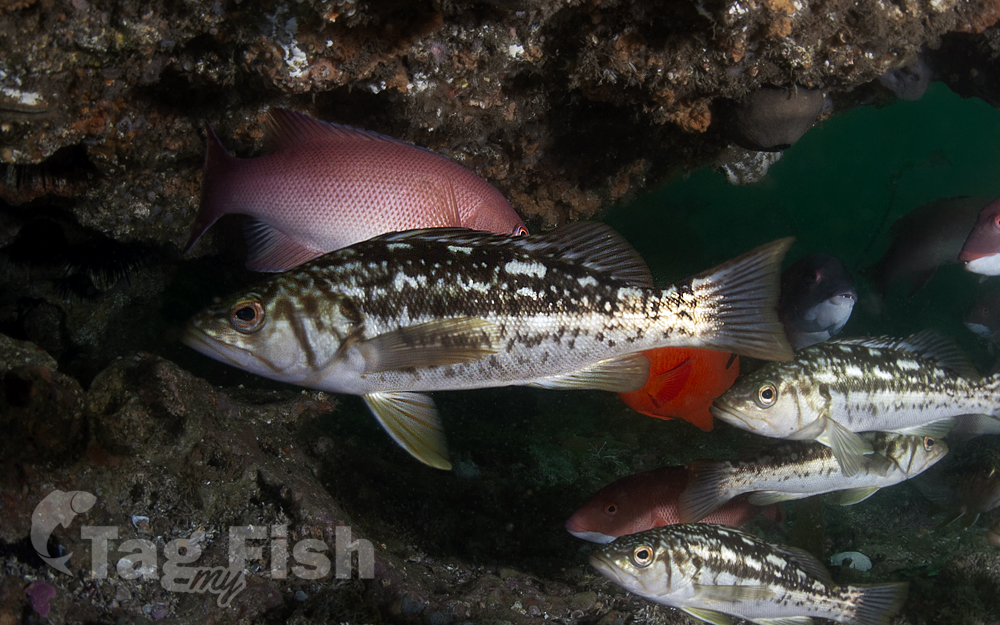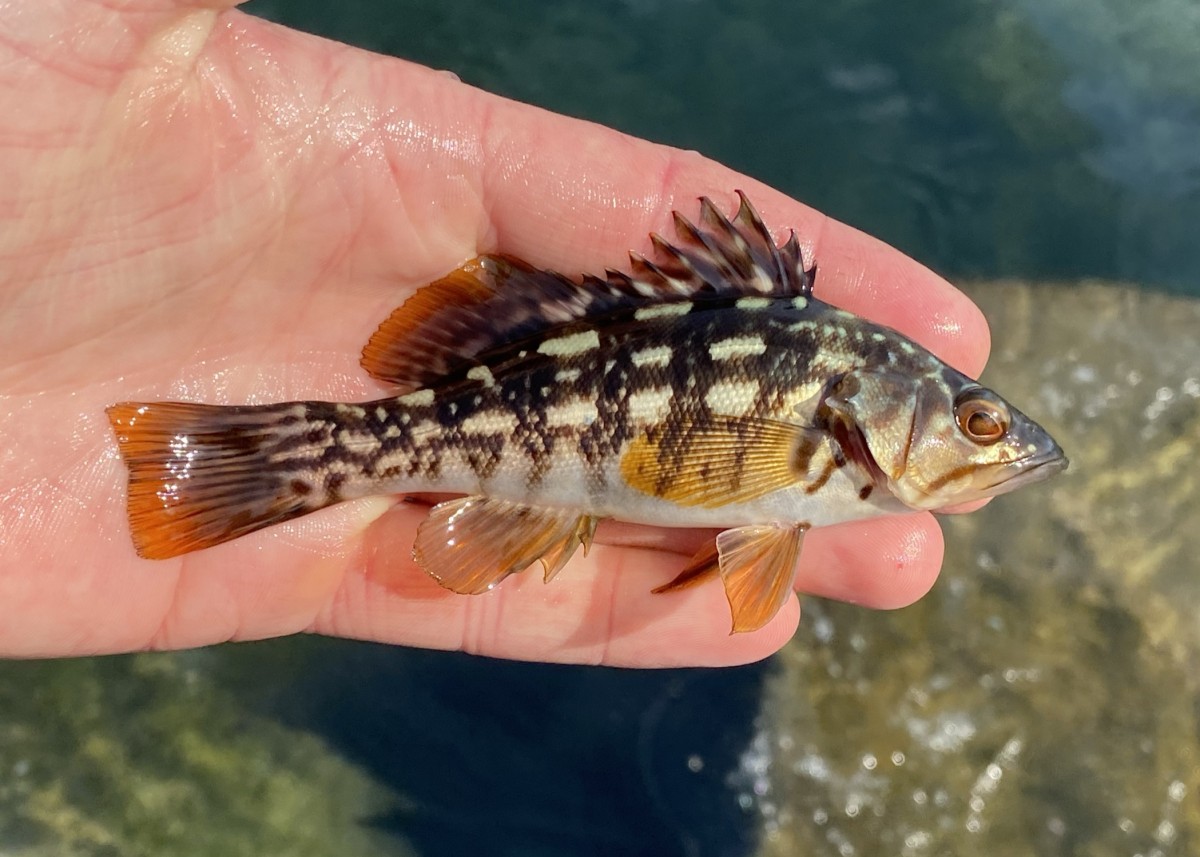Kelp bass
(Paralabrax clathratus)

Classification
General data
Paralabrax clathratus, the kelp bass, bull bass or calico bass, is a species of marine ray-finned fish, a sea bass from the subfamily Serraninae, classified as part of the family Serranidae which includes the groupers and anthias. It is found in the eastern North Pacific Ocean where it is an important species for both recreational and commercial fisheries.
Description
Paralabrax clathratus has an elongate, relatively deep, compressed body with a pointed snout and a large mouth. The mouth extends back as far as the centre line of the pupil and the lower mandible protrudes to form part of the snout. There are teeth all over the roof of the mouth. The margins of the preopercle have fine serrations. There is a large spine on the edge of the gill cover.
The dorsal fin has 10 spines and 13-14 soft rays, the 3rd and 4th spine are the longest, both being nearly twice the height of the 2nd spine. The anal fin has 3 spines and 7 soft rays. The caudal fin is truncated, although the margin can be wavy.
The juvenile fish are light brown in colour, while the adults are brown to olive-green fading ventrally. The dorsal part of the head has a mottling of light yellow spots while the dorsal part of the body is patterned with black, white, and/or olive green blotches. Along the back there are rows of white, rectangle shaped spots. The males have an orange tint on their lower jaw and chin.
A distinguishing feature of this species from other sea bass is that the kelp bass has piebald or multicoloured spotting under the belly, which is why it is alternatively called calico bass.
This species attains a maximum total length of 72 centimetres (28 in) and a maximum published weight of 7.0 kilograms (15.4 lb).
Distribution
Paralabrax clathratus is found in the eastern North Pacific Ocean off the western coast of North America. Its range extends from the central California south to the southern tip of Baja California. It was formerly found as far north as the mouth of the Columbia River on the boundary between Oregon and Washington State but it is now rare anywhere north of Point Conception in California.












